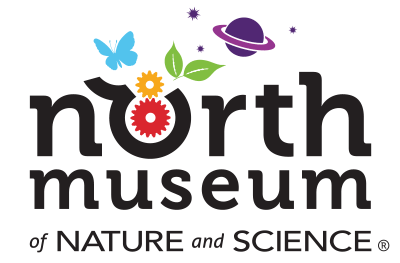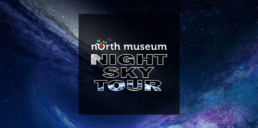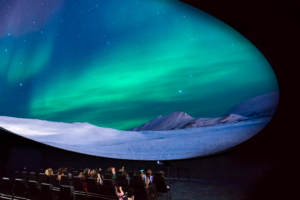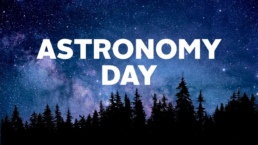Night Sky Tour-Astronomy Day Edition 2:30pm
Night Sky Tour—A special Astronomy Day Edition
Join the North Museum’s Astronomy Educators on ASTRONOMY DAY, to explore the wonders of the night sky in our live planetarium show, Night Sky Tour! Witness the night sky come to life as you learn about the constellations among the stars, planets currently visible, our place in the cosmos, and more! Each of our Planetarium Educators will bring their own expertise to the Night Sky Tour program, making each show a different experience. Ages 3+
FREE for Members.
$10 for non-members.
BUY TICKETS
Night Sky Tour-Astronomy Day Edition 12pm
Night Sky Tour—A special Astronomy Day Edition
Join the North Museum’s Astronomy Educators on ASTRONOMY DAY, to explore the wonders of the night sky in our live planetarium show, Night Sky Tour! Witness the night sky come to life as you learn about the constellations among the stars, planets currently visible, our place in the cosmos, and more! Each of our Planetarium Educators will bring their own expertise to the Night Sky Tour program, making each show a different experience. Ages 3+
FREE for Members.
$10 for non-members.
BUY TICKETS
Astronomy Day 2025
INTERNATIONAL ASTRONOMY DAY
Visit North Museum on May 3 from 10am–3pm to join this global celebration! It brings astronomy enthusiasts and the public together to share their passion for the cosmos through educational and stargazing activities. Enter with general admission. FREE for members.
North Museum Activities include:
- Lander creation
- Lander testing
- Space Slime
- Sun Dial creation
- Bottle Rockets
- Quantum Levitator
- Solar Scope
- Nebular Creation
- Night Sky Observation on North Museum grounds
- and more...
BUY TICKETS TO THE MUSEUM FOR MAY 3
Astronomy Day History:
It was established in 1973 by astronomer Doug Berger, who set up telescopes in public places to allow people to observe the skies.
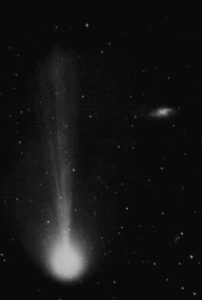
As an amateur astronomer based in Union City, California, Berger independently discovered Comet Kobayashi-Berger-Milon in 1975 on July 5. This was just a few days after its initial discovery by Toru Kobayashi near Fukui, Japan, on July 2, and shortly before Denis Milon's observation in Mount Washburn, Wyoming, on July 7. The comet, formally designated as Kobayashi-Berger-Milon, was characterized by Milon as having a 7.5 magnitude, appearing diffuse with condensation, and exhibiting a coma diameter of 10'. Although initially reported without a tail, subsequent observations at the Lick Observatory revealed a short tail less than 1° in length.
This collaborative and independent series of discoveries showcases the vital role of amateur astronomers in contributing to our understanding of the cosmos.
